Ferrari S.p.A. is an Italian luxury sports car manufacturer established in 1939 by Enzo Ferrari. It produced its first car in 1940 and adopted its current name in 1945. The production of road cars began in 1947. Becoming a public company in 1960, it was later a subsidiary of Fiat S.p.A. from 1963 to 2014. In 2016, Ferrari was spun off from Fiat Chrysler Automobiles. The company produces a range of supercars, grand tourers, and an SUV. Older Ferraris from the 1950s and 1960s are among the most valuable cars ever sold.
1923: Meeting with Francesco Baracca's Family
After a victory in Ravenna in 1923, Enzo Ferrari met the family of Francesco Baracca, a deceased flying ace, who suggested he adopt the Prancing Horse emblem as a good luck charm.
1929: Scuderia Ferrari Founded
In 1929, Enzo Ferrari founded Scuderia Ferrari, a racing team, initially to service gentleman drivers and amateur racers.
1932: First Use of Prancing Horse Emblem
In 1932, Enzo Ferrari first used the Prancing Horse emblem on his racing team's Alfa Romeo 8C, with a canary yellow background representing Modena.
1932: Scuderia Ferrari Motorcycle Racing Division
In 1932, Scuderia Ferrari established a motorcycle racing division to scout and train future Grand Prix drivers, utilizing British motorcycles from Norton and Rudge.
1933: Alfa Romeo Withdrawal
In 1933, Alfa Romeo's withdrawal from racing, coupled with Enzo's connections, transformed Scuderia Ferrari into Alfa Romeo's unofficial representative on the track.
1935: End of Motorcycle Racing Division
In 1935, Ferrari concluded its motorcycle racing division due to obsolescence of pushrod engines and economic troubles from the Great Depression, despite achieving three national titles and 44 victories.
1937: Scuderia Ferrari's Success
Between 1929 and 1937, Scuderia Ferrari achieved significant success, winning 144 out of 225 races with top drivers.
1937: Liquidation of Scuderia Ferrari
In 1937, Scuderia Ferrari was liquidated, marking a temporary end to its independent racing operations.
1939: Ferrari Founded
In 1939, Enzo Ferrari founded Ferrari S.p.A. in Maranello, Italy, though the company wouldn't produce its first car until the following year.
1939: Enzo Leaves Alfa Romeo to Found Auto Avio Costruzioni
In 1939, Enzo Ferrari left Alfa Romeo due to disagreements, founding his own company, Auto Avio Costruzioni, to produce his own cars.
1940: Abortive Effort in Racing
Aside from an abortive effort in 1940, Ferrari began racing sports cars.
1940: First Ferrari Car Built
In 1940, Ferrari built its first car.
1943: Factory Moved to Maranello
In 1943, under threat of Allied bombing raids during World War II, Auto Avio Costruzioni moved its factory to Maranello, where Ferrari remains to this day.
1945: Ferrari Adopts Current Name
In 1945, Auto Avio Costruzioni adopted the name Ferrari, marking a new era for the company.
1945: Name Change
In 1945, the company adopted its current name, Ferrari.
1947: Began Producing Road Cars
In 1947, Ferrari began to produce its current line of road cars.
1947: Return to Grand Prix Racing
In 1947, Ferrari returned to Grand Prix racing, which was evolving into modern-day Formula One.
1947: 125 S Wins Races
In 1947, the 125 S won six out of the ten races it participated in, marking Ferrari's successful entry into sports car racing.
1947: Use of Prancing Horse on Ferrari-Branded Car
In 1947, the rectangular Prancing Horse was first used on the Ferrari 125 S, the first Ferrari-branded sports car.
1948: Development of Cars for Formula Two and Formula Libre Events
In 1948, Ferrari started developing cars for Formula Two and Formula Libre events, which eventually led to the creation of the Dino engine.
1948: First Race of 125 F1
In 1948, Ferrari's first homebuilt Grand Prix car, the 125 F1, made its debut at the Italian Grand Prix, leading Enzo to continue the racing program.
1949: Victory at 24 Hours of Le Mans
In 1949, Ferrari achieved a significant victory at the 24 Hours of Le Mans, enhancing its reputation as a high-quality automaker.
1949: Introduction of the 166 Inter
In 1949, Ferrari introduced the 166 Inter, marking a significant move into the grand touring road car market with a four-seat berlinetta coupe.
1951: First F1 Series Victory
In 1951, Ferrari achieved its first victory in an F1 series at the British Grand Prix, signaling a period of strong performance.
1951: Carrera Panamericana Victory
In 1951, Ferrari secured a victory at the Carrera Panamericana, further solidifying its reputation in the racing world.
1952: World Drivers' Championships
Between 1952 and 1964, Ferrari secured six World Drivers' Championships.
1952: Fifteen Champion Drivers
Since 1952, Scuderia Ferrari has fielded fifteen champion drivers.
1957: Ten Years of Success
By 1957, just ten years after beginning to compete, Ferrari had achieved significant success in sports car racing, including multiple championships and race victories.
1958: First Series-Produced Car: 250 GT Coupé
In 1958, Ferrari began production of its first series-produced car, the 250 GT Coupé, marking a shift towards broader market appeal.
1960: Ferrari Became a Public Company
In 1960, Ferrari became a public company, marking a significant change in its corporate structure.
1963: Ford Negotiations Fall Through
In 1963, Ferrari approached Ford to become a business partner, but negotiations ultimately failed.
1963: Subsidiary of Fiat
In 1963, Ferrari became a subsidiary of Fiat S.p.A.
1963: Ford's Attempted Buyout of Ferrari
In 1963, the Ford Motor Company approached Enzo Ferrari for a possible buyout, conducting audits of Ferrari's assets; however, Ferrari unilaterally cut off negotiations when he realized he would not maintain control over the company racing program.
1964: Initial Fortunes Ran Dry
After 1964, Ferrari's initial fortunes began to decline, leading to less consistent title wins.
1964: Constructor's Championship
Between 1952 and 1964, Ferrari secured a Constructor's Championship.
1964: Ferrari Wins F1 Season in American Colors
In 1964, Ferrari and John Surtees won the Formula One season in American colors (blue with a white racing stripe) while protesting the FIA's homologation requirements, racing under the North American Racing Team.
1964: Production of the Ford GT40
In 1964, as a result of failed negotiations with Ferrari, Henry Ford II directed his racing division to build a car capable of beating Ferrari on the world endurance circuit, leading to the production of the Ford GT40.
1965: Last Consecutive Victory at 24 Hours of Le Mans
In 1965, Ferrari had its last consecutive victory at the 24 Hours of Le Mans.
1967: Introduction of Dino 206 GT
In 1967, Ferrari introduced the V6-powered Dino 206 GT, its first production rear mid-engined car, sold under the Dino marque.
1967: WSC Title
In 1967, Ferrari won another WSC title.
1968: Release of 365 GTB/4
In 1968, Ferrari produced the 365 GTB/4, which featured streamlined styling that modernized Ferrari's design language.
1969: Tasman Series Championship Win
In 1969, Chris Amon won the Tasman Series championship driving a Dino 246 Tasmania, marking Ferrari's final participation in non-F1 formula racing.
1969: Fiat Buys 50% of Shares
In 1969, Fiat acquired 50% of Ferrari's shares, marking the beginning of a significant partnership.
1969: FIAT Buys Controlling Interest
In 1969, as the Ford deal fell through, FIAT approached Ferrari with a more flexible proposal and purchased controlling interests in the company. Enzo Ferrari retained a 10% share.
1969: Last Grand Prix Entry by a Non-Scuderia Ferrari Team
In 1969, the North American Racing Team's entries in the final three rounds of the season marked the last time a team other than Scuderia Ferrari entered a World Championship Grand Prix with a Ferrari car.
1972: WSC Title
In 1972, Ferrari won another WSC title.
1973: Ceases Competing in Sports Car Events
In 1973, Ferrari ceased competing in sports car events due to poor revenue allocation and Formula One performance, shifting to supporting privateer teams instead.
1973: Introduction of Berlinetta Boxer
In 1973, Ferrari introduced the flat 12 powered Berlinetta Boxer, the first rear mid-engine model to be sold under the Ferrari name.
1975: Niki Lauda's Drivers' Title
In 1975, Niki Lauda's skill granted Ferrari a drivers' title, improving the team's performance.
1977: Niki Lauda's Drivers' Title
In 1977, Niki Lauda's skill granted Ferrari a drivers' title, improving the team's performance.
1982: Constructors' Championship
In 1982, Ferrari won the Constructors' Championship.
1983: Constructors' Championship
In 1983, Ferrari won the Constructors' Championship.
1984: Introduction of the 288 GTO
In 1984, the Ferrari 288 GTO was introduced and is regarded by many as the first in the line of Ferrari flagship supercars.
1988: Enzo Ferrari's Death and Fiat's Expanded Stake
In 1988, Enzo Ferrari died, which led to Fiat expanding its stake in Ferrari to 90%. The last car he approved was the F40.
1988: Death of Enzo Ferrari
In 1988, Enzo Ferrari, the founder of Ferrari, passed away.
1991: Luca Cordero di Montezemolo Succeeds Enzo Ferrari
In 1991, Luca Cordero di Montezemolo succeeded Enzo Ferrari as chairman, beginning a 23-year period of significant expansion and increased profitability for the company.
1993: Ferrari Challenge Supported
Since 1993, Ferrari has supported the Ferrari Challenge, a one-make championship based around the company's road lineup.
1996: Michael Schumacher Signs Onto Team
In 1996, Michael Schumacher joined the Ferrari team, marking the beginning of a highly successful era.
1996: Relationship with Shell Oil
Since 1996, Ferrari has had a long-standing relationship with Shell Oil. Shell develops and supplies fuel and oils to the Scuderia Ferrari's Formula One and World Endurance Championship teams, as well as Ducati Corse's MotoGP and World Superbike teams.
1997: Launch of Formula Uomo Program
In 1997, Ferrari launched Formula Uomo, a long term master planned effort to improve overall corporate efficiency, production and employee happiness. It became a case study in social sustainability.
1999: Six Consecutive Constructors' Titles
Beginning in 1999, Ferrari won six consecutive constructors' titles.
2000: Schumacher's Consecutive Drivers' Titles
Between 2000 and 2004, Michael Schumacher secured five consecutive drivers' titles for Ferrari.
2003: Felipe Massa's Grooming
Between 2003 and 2006, the team successfully groomed Felipe Massa, which led to the start of the Ferrari Driver Academy.
2004: Montezemolo Chairman of Fiat
In 2004, Luca Cordero di Montezemolo was also the chairman of Fiat proper.
2004: Styling of A1 Grand Prix Car
In 2004, the Ferrari Formula One car served as the styling inspiration for the cars supplied to the A1 Grand Prix series.
2004: Dominant Season
In the 2004 season, Ferrari was especially dominant, losing only three races.
2005: Start of potentially faulty brake fluid reservoir cap production
Since 2005, Ferrari cars sold in the US may potentially have faulty brake fluid reservoir caps. In August 2022, the company recalled these vehicles over a potential for brake failure.
2006: Felipe Massa's Grooming
Between 2003 and 2006, the team successfully groomed Felipe Massa, which led to the start of the Ferrari Driver Academy.
2007: Räikkönen's Driver Title
In 2007, Kimi Räikkönen won the drivers' title for Ferrari.
2008: Constructors' Title
In 2007 and 2008, Ferrari won two constructors' titles.
2008: Display of Ethanol-Powered F430 Spider
In 2008, Ferrari displayed an F430 Spider that runs on ethanol at the Detroit Auto Show, showcasing alternative fuel technology.
2008: Launch of Special Projects Programme
In 2008, Ferrari launched the Special Projects programme to revive the tradition of one-off and limited production coachbuilt models, allowing clients to create bespoke cars based on modern Ferrari road cars.
2008: Supply of Cars for A1 Grand Prix Series and Launch of Special Projects Programme
In 2008, Ferrari supplied cars with V8 engines for the A1 Grand Prix series and launched the Special Projects programme for bespoke models.
2008: Formula Uomo Investment
In 2008, over €200 million had been invested in Formula Uomo, Ferrari's long term master planned effort to improve overall corporate efficiency, production and employee happiness.
2008: Completion of the SP1
In 2008, the first car completed under the Special Projects programme was the SP1, which was commissioned by a Japanese business executive.
2009: Ferrari Driver Academy Begun
In 2009, Ferrari began the Ferrari Driver Academy, a junior driver program, following the successful grooming of Felipe Massa.
2009: Ferrari Continues Supplying Cars for A1 Grand Prix Series
In 2009, Ferrari continued to supply cars complete with V8 engines for the A1 Grand Prix series, with the car designed by Rory Byrne and styled to resemble the 2004 Ferrari Formula One car.
2010: Unveiling of HY-KERS Concept
At the 2010 Geneva Motor Show, Ferrari unveiled the HY-KERS Concept, a hybrid version of their flagship 599, adding over 100 horsepower to the 599 Fiorano's 612 hp.
2010: Production of Millechili Concept Car
In 2010, Ferrari produced the Millechili, their most recent concept car made in-house.
2010: Shift Towards In-House Design
In 2010, Ferrari's focus for the Special Projects programme shifted from external coachbuilders towards creating new in-house designs for clients, following the creation of Ferrari's in-house styling centre.
2010: Montezemolo Chairman of Fiat
In 2010, Luca Cordero di Montezemolo was the chairman of Fiat proper.
2011: Announcement of Tailor Made Programme Update
In late 2011, Ferrari announced a significant update to its customisation philosophy with the Tailor Made programme, allowing clients to collaborate with designers in Maranello for extensive personalization options.
2012: Popularity of Rosso Corsa
In 2012, rosso corsa ('racing red') remained a popular choice for Ferrari cars, with 40% of cars leaving the factory painted red.
2014: Subsidiary of Fiat
In 2014, Ferrari was still a subsidiary of Fiat S.p.A.
2014: End of Montezemolo's Chairmanship
In 2014, Luca Cordero di Montezemolo's 23-year chairmanship of Ferrari came to an end, marking the conclusion of a transformative era for the company.
2014: Cease and Desist Letter to Deadmau5
In 2014, musician Deadmau5 received a cease and desist letter from Ferrari regarding his customized 458 Italia (dubbed the "Purrari"), which featured custom badges and a Nyan Cat-themed wrap, leading to controversies over brand perception and owner restrictions.
2014: Production of LaFerrari
In mid-2014, Ferrari put the flagship LaFerrari into production, featuring a hybrid system to enhance performance.
2015: Brand Value Maintenance Strategy
In 2015, Ferrari's head of sales stated that the company's strategy of limiting production below customer demand and internally ranking purchasers was aimed at maintaining brand value and preserving the 'Ferrari dream.'
2016: Spin Off From Fiat Chrysler Automobiles
In 2016, Ferrari was spun off from Fiat Chrysler Automobiles, the successor entity to Fiat S.p.A.
2017: Ban on Pink Paint and Pokémon Ferraris
In 2017, Ferrari's Australasia CEO stated that certain customizations, such as pink paint and Pokémon-themed designs, were "against the company's ethos" and prohibited under "brand rules."
2019: Academy Graduates in F1
As of 2019, 5 out of 18 Ferrari Driver Academy inductees had graduated and become F1 drivers.
2019: Total Ferrari Cars Built and Sold
As of the end of 2019, the total of Ferrari built and sold cars in their whole company history is 219,062.
2019: Introduction of SF90 Stradale
In 2019, Ferrari introduced their first plug-in hybrid (PHEV) model with the SF90 Stradale, marking a step towards electrification.
2019: Labeled World's Strongest Brand
In 2019, Ferrari was recognized as the world's strongest brand by the financial consultancy Brand Finance, owing to its cars, enthusiast culture, and successful licensing deals.
2019: Participation in Sim Racing
In 2019, Scuderia Ferrari began participating in sim racing, expanding their involvement in motorsport.
January 2020: Recall of Vehicles for Airbags
In January 2020, the Italian carmaker Ferrari recalled 982 vehicles for passenger airbags due to the Takata airbag recalls. Every car involved will get a new passenger-side airbag assembly.
June 2021: High Fashion Brand Debut
In June 2021, Ferrari debuted their high fashion brand with their first runway.
2021: Benedetto Vigna Replaces Camilleri as CEO
Beginning in 2021, Benedetto Vigna replaced Louis Camilleri as CEO of Ferrari, announcing plans to develop Ferrari's first fully electric model.
2021: Introduction of the 296
In 2021, Ferrari continued its move toward electrification by introducing the 296, a plug-in hybrid (PHEV) model.
August 2022: Recall for Potential Brake Failure
On 8 August 2022, Ferrari recalled almost every car it's sold in the US since 2005 over a potential for brake failure. The affected cars will be fitted with a replacement cap and receive a software update.
May 2023: Market Capitalization
As of May 2023, Ferrari's market capitalization was approximately US$85.5 billion.
October 2023: Accepting Cryptocurrency Payments
In October 2023, Ferrari started accepting payment in cryptocurrency for its vehicles in the US with intentions to expand the scheme to Europe in 2024. The cryptocurrency payments will be immediately traded into traditional currency to avoid price swings.
2023: Re-entered Prototype Sports Car Racing
In 2023, Ferrari reentered prototype sports car racing, fielding two 499P sports prototypes for the FIA World Endurance Championship.
2024: Cryptocurrency Payment Expansion
In 2024, Ferrari plans to expand accepting payment in cryptocurrency to Europe after starting the scheme in the US in October 2023. The cryptocurrency payments will be immediately traded into traditional currency to avoid price swings.
2024: Repeated Feat at 24 Hours of Le Mans
In 2024, Ferrari repeated its feat at the 24 Hours of Le Mans, marking its first consecutive victory at the race since 1965.
February 2025: Announcement of First Fully Electric Car
In February 2025, Ferrari announced plans to unveil its first-ever fully electric car in October, promising a unique and innovative presentation.
Mentioned in this timeline
Cryptocurrency is a digital currency operating on a decentralized network...
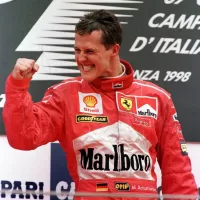
Michael Schumacher is a retired German Formula One racing driver...
World War II - was a global conflict between the...
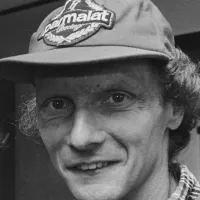
Niki Lauda was an Austrian Formula One driver and aviation...
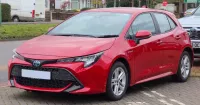
A car also known as an automobile is a wheeled...

The domestic cat is a small domesticated carnivorous mammal and...
Trending

2 months ago Lily Allen Opens Up About Marriage to David Harbour and Personal Struggles.
6 months ago Angola: Call for Electoral Law Improvements and Transparency Assurance by President
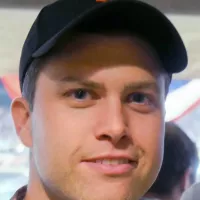
2 months ago Colin Jost and Jimmy Kimmel Mock Trump's Nobel Peace Prize Loss
8 days ago Jalen Williams' Impact: Thunder, Warriors Matchups, Dort's Future, Injury Return
Keldon Johnson is an American professional basketball player currently playing for the San Antonio Spurs in the NBA Prior to...

6 months ago Brokeback Mountain's 20th Anniversary: Challenging Hollywood and impacting audiences, starring Heath Ledger.
Popular

Candace Owens is an American conservative political commentator and author...

Ilhan Omar is an American politician currently serving as the...

XXXTentacion born Jahseh Dwayne Ricardo Onfroy was a controversial yet...

Tom Cotton is an American politician and Army veteran currently...
The Kennedy Center Honors are annual awards recognizing individuals and...
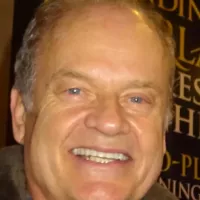
Kelsey Grammer is an accomplished American actor producer and singer...